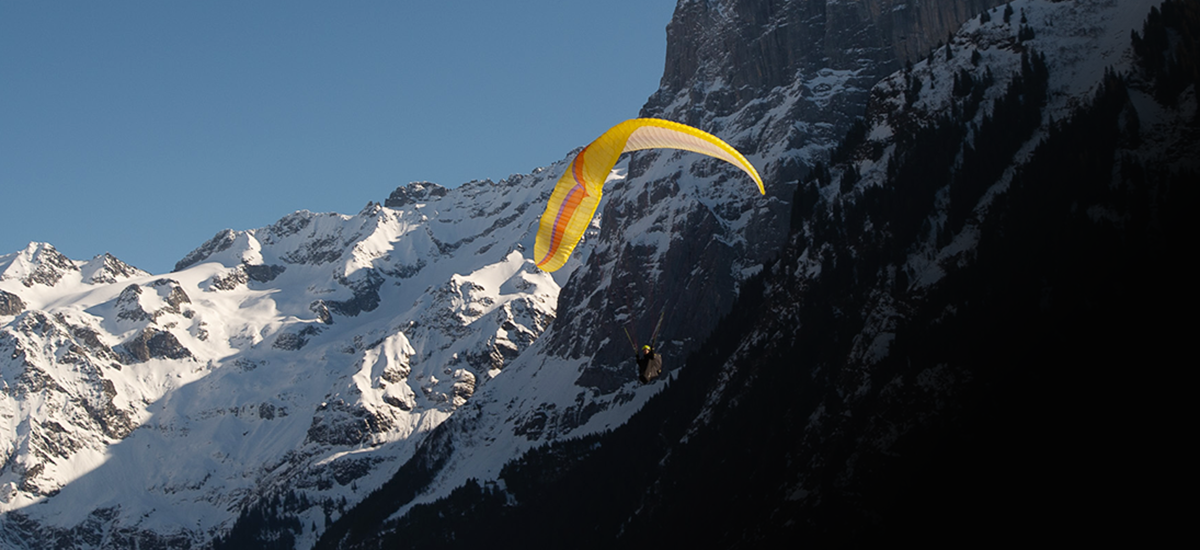
Fly better
The winter training
The season will start again soon! We are looking forward to long, sunny days. To thermals that will beam us up and to beautiful flights with intense experiences. But there are also valley winds, clouds that are getting bigger and bigger and the occasional nasty turbulence waiting to rudely wake us from our winter sleep.
The anticipation of spring can already be felt at the take-off sites. We know from our own experience that anticipation is not enough to be able to face the unpleasant moments of flying in a relaxed manner.
We have therefore put together a short and effective training plan for the next few days of flying. And, as in other sports, we recommend that you regularly incorporate planned basic training alongside the fun thermal and cross-country flying. Whether you fly independently or in a SIV: flying maneuvers trains you in so many ways. Starting with orientation in space while simultaneously moving (quickly), understanding the canopy movements and intervening precisely in emergency situations.
The maneuvers presented are simple and should be able to be flown independently by all pilots. And of course they can be expanded freely. The training plan is aimed at the normal recreational pilot.
We will not give detailed explanations of the maneuvers here. You can find these in the glider manual or, better yet, from a flight instructor you trust. You are also welcome to book a few days with us at the school or take part in our Member Flying. Please be careful, plan your flight and only do what you are responsible for yourself.
Training plan - Day 1
Fast circles / Examination program / Spiral approach
The focus is on a quick start, actively stabilizing the speed with the outside brake and a precise but gentle exit on the axis. The speed should be adapted to your ability. Constantly ask yourself whether you are in your personal comfort zone. It is important to get to grips with the spiral dive, with all its advantages and disadvantages.
Anyone who is not yet able to fly a spiral approach in a controlled manner and, above all, to recover from it can improve their skills and overall enjoyment of flying immensely with a few training flights. Without this important skill on board, we wouldn't want to be in the air.
The examination program number 2
Probably well known from training and therefore has the reputation of being a boring maneuver: the beautifully flown figure eight. At first glance, a very simple maneuver. And yet so complex. You can fly this maneuver in different ways. Negatively controlled and slow or dynamic and fast. Both ways present us with completely new challenges and let us feel the wing differently. The perfect training for the figure eight in the cross approach.
Tag 2
Roll / Wingover
A multidimensional maneuver that requires a high degree of body and wing control. It should be flown at a maximum angle of 90 degrees at the beginning. It is best to do this by simply shifting your weight, without using the brakes; less is more at the beginning. It is important to keep a safe distance from the ground. The danger with wingovers is large collapses, which can lead to entanglements and subsequent autorotation.
Big Ears
It's not that easy to fly big ears with a good sink rate with a modern glider and possibly with a harness. But especially in summer, when climbing over large areas over the mountains, big ears are an important maneuver to make progress while sinking at the same time. In turbulent air, the maneuver must be able to be flown perfectly, even with a high adrenaline level. So: practice!
It goes without saying that these maneuvers cannot be learned perfectly in one day. Regular training is important. And paragliding does not become safer and better just through maneuver training. Ground handling, appropriate equipment and theoretical knowledge are also important. But these are topics for further articles.
We wish you good and safe flights - stay tuned!
